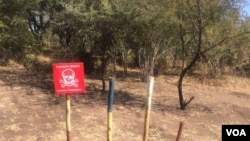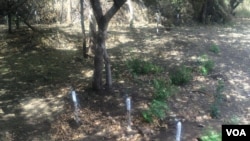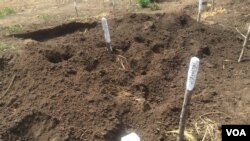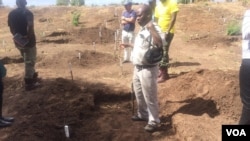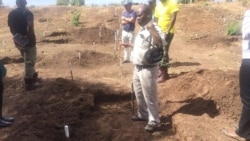Thirty-six years after independence, villagers along the Zimbabwe-Mozambique border are still being seriously affected by landmines planted during the war of liberation of the 1970s by the Rhodesian security forces to stop freedom fighters from entering the country.
In several areas, some of the minefields are being cleared by a non-governmental organization, which is giving the villagers a new lease of life.
Most of the areas worst affected by landmines planted by the Ian Smith regime include Mukumbura communal lands, Sheba Forest, Burma Valley, Rusitu to Muzite Mission, Sango Border Post to Crooks Corner and Border Streams.
Some organizations clearing the landmines in Mukumbura say undetonated mines in the area are very dense, unfenced and situated close to homesteads, schools and clinics and as a result are still seriously affecting the lives of local people.
Several lives have been lost in the past as villagers have tried to use hoes and shovels to dig the landmines. Some villagers have also lost a lot of livestock, a source of livelihood in this border area.
A non-governmental organization, Halo Trust, has brought hope to villagers in Mukumbura communal lands as it is in the process of clearing the minefields using modern technology.
Halo Trust has cleared about 25 kilometers of the 400 kilometer stretch occupied by local people. Some of the villagers say they are now accessing their fields, grazing land and a local river full of fish in cleared areas.
Some of the happy villagers are Shepherd Madzengerere and Michael Murinyu of Kapfudza village, who said the minefields have seriously affected their lives.
July Picture Knowledge, the demining manager of Halo Trust, said they are expected to demine a 400 kilometer stretch along the border area.
Tom Dibb, Halo Trust program manager, noted that they needed more resources to demine the border area.
Halo Trust estimates that over 1,550 have been killed by the landmines from the time they were planted by Rhodesian security forces.





